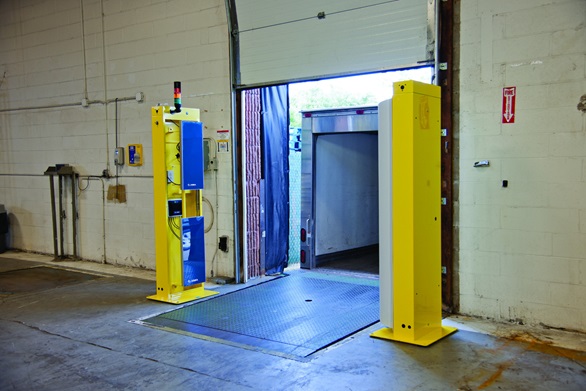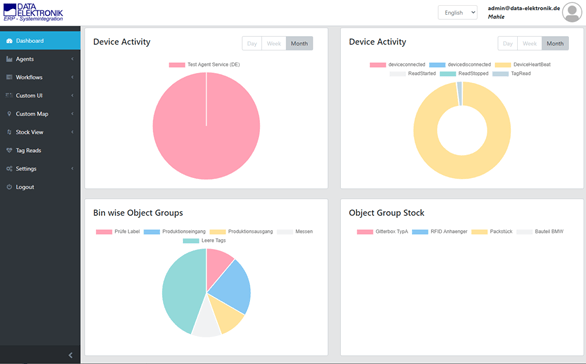RFID recording during loading
Among other things, the decision as to whether every individual product, just the packaging boxes, or even just the load carriers are to be equipped with RFID tags and read is decisive for the feasibility of RFID recording. There is a very wide variety of application scenarios here. It is also important to consider whether the detection points to be passed through – also known simply as RFID gates – play a role in direction recognition, the differentiation of transport vehicles and the filtering of objects within range which are moving or “standing around”. Shielding is also often required for nearby docking bays. You can rely on our expert knowledge for all these points and thus avoid tragic malinvestments as a result of selecting the wrong technology, processes, tags, coding or hardware.
System integration and controlling RFID gates
We recommend the use of our RFID middleware / IoT platform to ensure you get the most out of your RFID infrastructure. This allows you to integrate RFID hardware from different manufacturers to create the optimal solution for you. This includes, for example, sensors for direction recognition, readers with intelligent filter functions and output displays such as signal lights or outputs on terminals or monitors. The following sub-functions are relevant for loading controls, among others:
- Device management of RFID readers and antennae as well as printers and mobile devices from various manufacturers
- Process-related assignments of gates to customer and loading orders for target/actual control
- Automated identification of parts and groups for dynamic further processing
- Real Time Location System (RTLS) for monitoring the current locations of tagged objects, contents and orders
- Interfaces for backend systems, such as SAP for example



